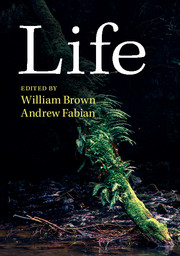Book contents
- Frontmatter
- Contents
- List of figures
- List of tables
- Notes on contributors
- Preface and acknowledgements
- 1 Life and death of a cell
- 2 The spark of life
- 3 From genomes to the diversity of life
- 4 Artificial life
- 5 Life in conflict: soldier, surgeon, photographer, fly*
- 6 Life in the ancient world*
- 7 Life in ruins*
- 8 The after-life*
- Index
2 - The spark of life
Published online by Cambridge University Press: 05 September 2014
- Frontmatter
- Contents
- List of figures
- List of tables
- Notes on contributors
- Preface and acknowledgements
- 1 Life and death of a cell
- 2 The spark of life
- 3 From genomes to the diversity of life
- 4 Artificial life
- 5 Life in conflict: soldier, surgeon, photographer, fly*
- 6 Life in the ancient world*
- 7 Life in ruins*
- 8 The after-life*
- Index
Summary
Alex Mitchell achieved a curious kind of fame. He died while laughing uproariously at an episode of The Goodies, a famous British TV comedy show. The sketch featured a game of ‘Ecky Thump’, a spoof martial art contest in which opponents pelted one another with black puddings and defended themselves with a set of bagpipes. Alex found it hilarious and was convulsed with laughter throughout much of the episode. He let out a huge guffaw at one particularly amusing piece and then, to the surprise and consternation of his family, suddenly stopped laughing, collapsed on the sofa and died. The story of the ‘man who died laughing’ became headline news and his wife even subsequently wrote to the Goodies thanking them for making her husband’s last moments so happy.
It was later found that Alex had a rare heart condition in which excitement can adversely affect the electrical activity of the heart, precipitating a cardiac arrest. Although it is perhaps not widely appreciated, humans are electrical machines. Everything that we think, feel and do is caused by electrical signals in our cells, from the beating of our hearts to our ability to see, hear, think, speak and move our limbs. We even define death as when the electrical activity of our brain ceases. Ultimately, this electrical activity and thus our thoughts, feelings, actions – even consciousness itself – is produced by a set of little-known but extremely important proteins called ion channels. This essay tells some of their remarkable stories and shows how Cambridge scientists played a crucial role in unravelling how the electrical signals in our cells generated.
- Type
- Chapter
- Information
- Life , pp. 24 - 39Publisher: Cambridge University PressPrint publication year: 2014



